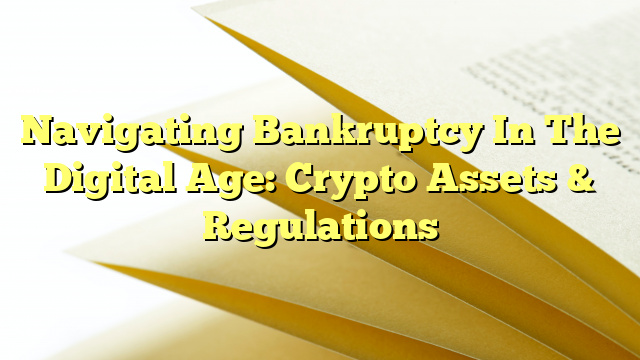Table of Contents
Introduction
In the digital age, the rise of cryptocurrencies and other digital assets has presented new challenges in the field of bankruptcy. As more individuals and businesses hold significant amounts of crypto assets, questions arise regarding their treatment in bankruptcy proceedings. This article explores the intersection of crypto assets and bankruptcy, as well as the regulatory challenges that come with it.
Crypto Assets and Bankruptcy
When an individual or business files for bankruptcy, their assets are typically liquidated to repay creditors. Traditionally, these assets include cash, property, and other tangible items. However, with the advent of cryptocurrencies, the definition of assets has expanded to include digital currencies like Bitcoin and Ethereum.
One of the main challenges in dealing with crypto assets in bankruptcy is their volatility and lack of centralized control. Unlike traditional assets, cryptocurrencies can fluctuate in value dramatically, making it difficult to determine their worth at the time of bankruptcy. Additionally, the decentralized nature of cryptocurrencies means that there is no central authority to seize or control these assets.
To address these challenges, bankruptcy courts have begun developing frameworks for dealing with crypto assets. Some courts treat cryptocurrencies as intangible property, while others view them as a form of currency. The treatment of crypto assets in bankruptcy can have significant implications for individuals and businesses, as it determines how these assets are valued and distributed to creditors.
Regulations and Challenges
Regulating crypto assets in bankruptcy is a complex task, as it requires balancing the need for investor protection with the desire to foster innovation in the digital asset space. One of the main challenges is determining how to value crypto assets, given their volatility and lack of centralized control.
Additionally, the anonymous nature of many cryptocurrencies presents challenges in identifying and tracing ownership. This can make it difficult to determine who has a claim to the assets in a bankruptcy proceeding. Furthermore, the international nature of crypto assets adds another layer of complexity, as different jurisdictions may have different regulations and approaches to dealing with these assets.
Despite these challenges, regulatory bodies and lawmakers are beginning to address the issue of crypto assets in bankruptcy. In the United States, the Securities and Exchange Commission (SEC) has taken steps to regulate initial coin offerings (ICOs), which are a common way for companies to raise funds through the issuance of digital tokens. Additionally, the Internal Revenue Service (IRS) has provided guidance on the tax treatment of cryptocurrencies.
Conclusion
Navigating bankruptcy in the digital age presents unique challenges when it comes to dealing with crypto assets. The volatility, lack of centralized control, and regulatory complexities surrounding cryptocurrencies make it a complex area of law. However, as the use of cryptocurrencies continues to grow, it is crucial for regulators, lawmakers, and bankruptcy courts to develop frameworks that address the treatment of these assets in bankruptcy proceedings.
By understanding the intersection of crypto assets and bankruptcy, individuals and businesses can better navigate the complexities of this evolving area of law. As regulations continue to develop, it is important to stay informed and seek legal advice when dealing with crypto assets in bankruptcy.

